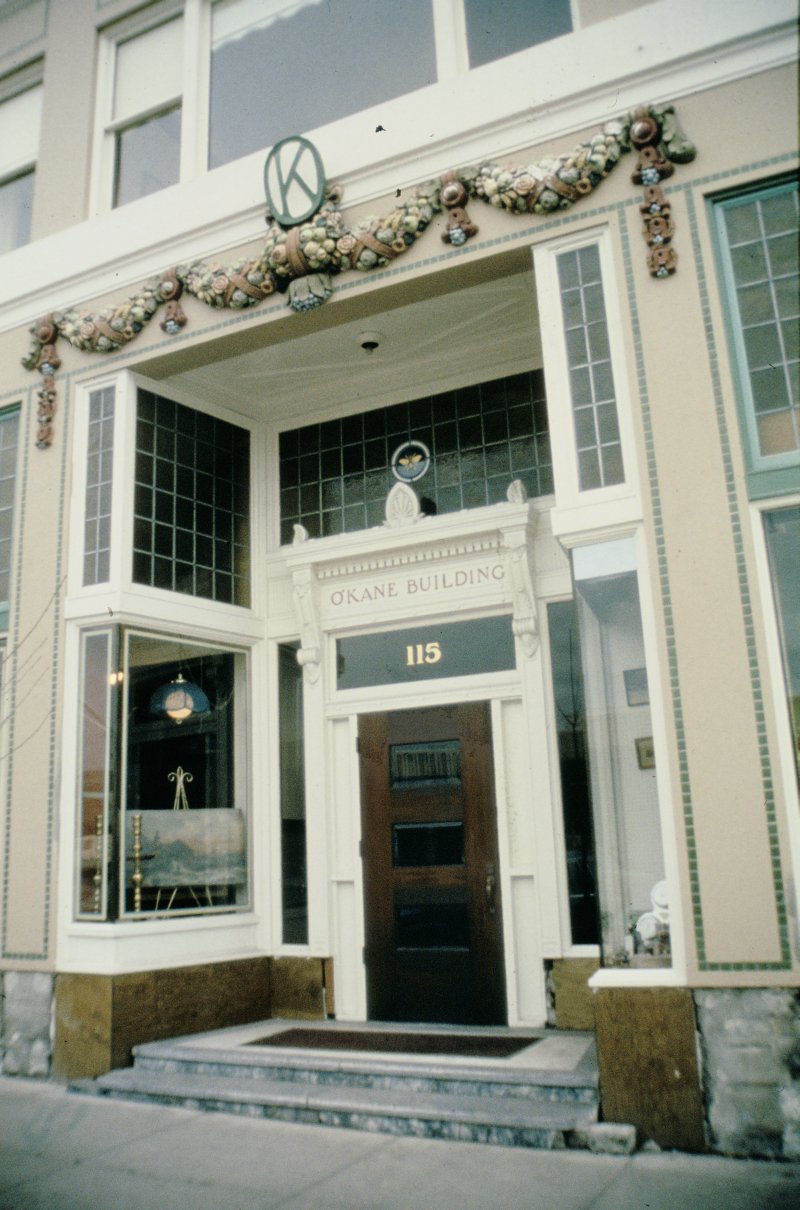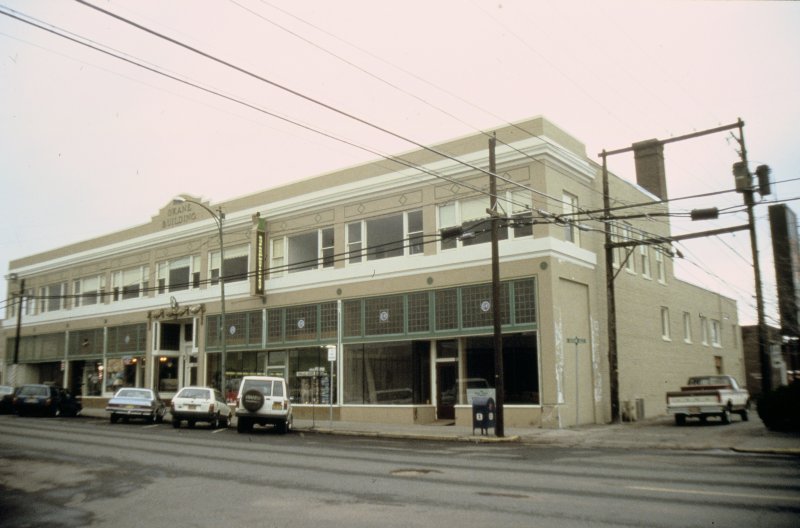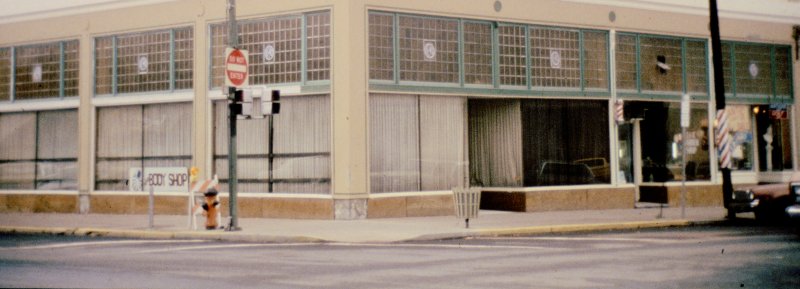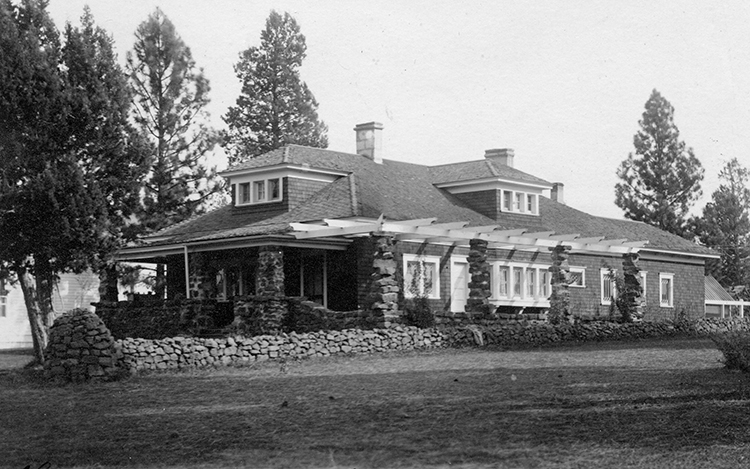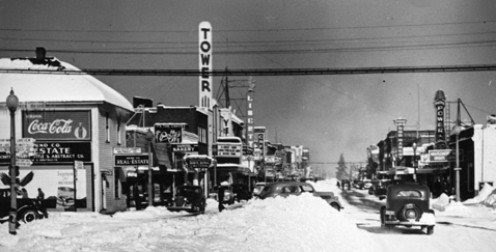The O'Kane Building, at 115 Northwest Oregon Avenue in Bend, was built by Hugh O'Kane in 1916. Designed by the Beezer Brothers of Seattle, the O'Kane building is the best representative of early modern commercial buildings in Bend and was the first to be built with reinforced concrete. At 100 by 140 feet, with approximately 26,000 square feet of interior space, the two-story structure is still the largest commercial building in the city.
O'Kane was born in Ireland in 1857, and embarked on the first of many adventures when at twelve years old he stowed away on a ship to New York City. Over the next four decades, he was an itinerant, working as a tailor, boxer, wrestler, runner, sailor, miner, gambler, smuggler, stagecoach driver, dispatch driver, horse trainer, and sports manager. In 1895, he entered the hotelier business and built a large hotel in Grangeville, Idaho, which is no longer standing.
In 1903, O’Kane’s restlessness took him to Bend, where he built the Bend Hotel. When O'Kane's saloon burned down in 1905, and his hotel suffered the same fate in 1915, he immediately rebuilt on the same spot of his hotel, this time constructing the O'Kane Building.
With retail space on its first floor, the building had offices and a residential apartment on the second floor, where Hugh O’Kane and his wife lived. The main façade included stained-glass transom windows and the Bend emblem, which is still used as a symbol of the city. Decorative green tile added ornament to the storefronts. Above the main entrance was a plaster cornucopia of fruit and flowers beneath the trademark letter K, for O'Kane.
Between 1916 and 1930, the O'Kane building was the commercial heart of central—and even eastern—Oregon. The original building contained a theater, and the offices above the storefronts were rented out and used by many of the city’s prominent citizens. After Deschutes County broke away from Crook County in 1916, the O'Kane building was used temporarily as the county courthouse. A local chapter of the Ku Klux Klan rented office space in the building around 1924-25, and Walter Green, a Black businessman operated a shoeshine stand in the entrance of the building from 1926 to 1927.
During the 1920s, O'Kane frequently sat outside his building, regaling passersby with stories of his adventures. Toward the end of his life, his restless spirit surfaced, and he left Bend for Portland, where he died in 1930. At the time of his death the building and property were valued at $100,000.
The O'Kane Building was listed on the National Register of Historic Places in 1986. It remains in use today in much the same way it was originally intended—a commercial building at the heart of a bustling city.
-
![]()
-
![O'Kane Building]()
-
![O'Kane Building]()
O'Kane Building.
O'Kane Building Courtesy Oregon State Historic Preservation Office, U. of Oregon Libraries, pna_00583
Related Entries
-
![Bend Amateur Athletic Club Gymnasium]()
Bend Amateur Athletic Club Gymnasium
The Bend Amateur Athletic Club Gymnasium, also known as the Old Bend Hi…
-
![Goodwillie House]()
Goodwillie House
The Goodwillie House, commonly known as the Allen-Rademacher House, is …
-
![Tower Theatre]()
Tower Theatre
The Tower Theatre is Bend’s most colorful and iconic landmark. Since th…
Related Historical Records
Map This on the Oregon History WayFinder
The Oregon History Wayfinder is an interactive map that identifies significant places, people, and events in Oregon history.
Further Reading
"Bend Pioneer Dies in Night." Bend Bulletin, Dec 3, 1935.
National Register of Historic Places Nomination Form, prepared by Karen Zisman and Sally Donovan, 1986.

